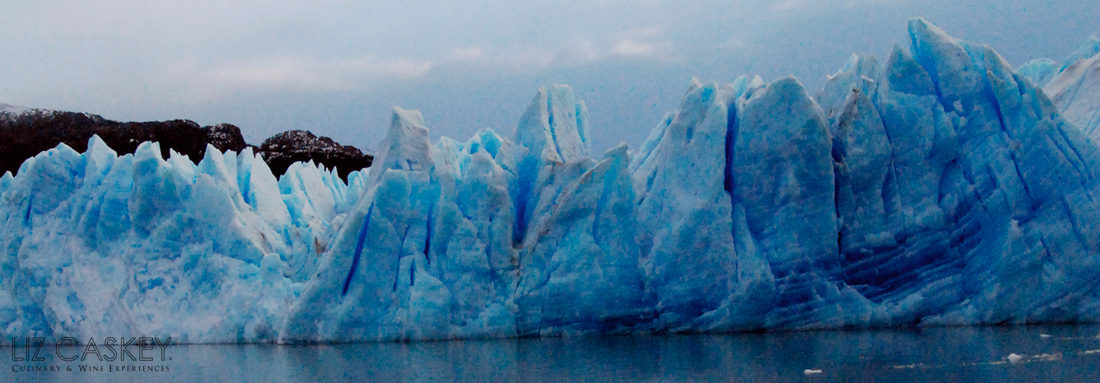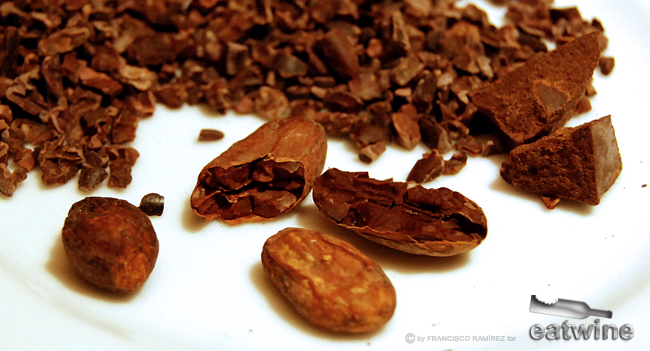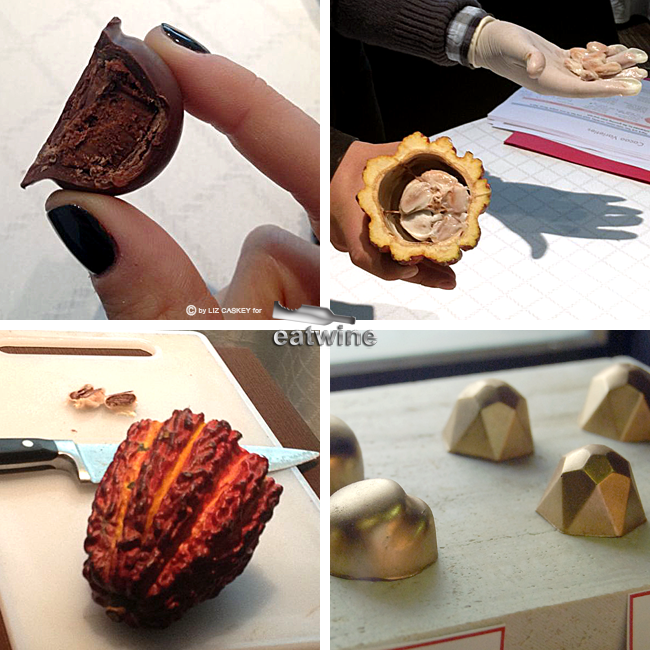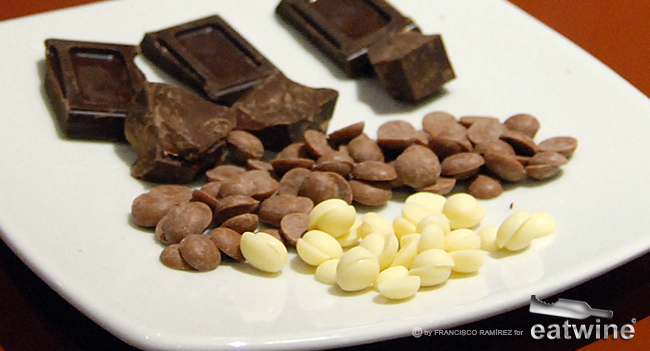Peruvian chocolate may not be overly mainstream yet but it’s exotic cacao, especially the white variety, is becoming highly appreciated by leading chocolatiers around the world like Pierre Marcolini, Pierrick Chouard, Jean Paul Hevin, Philippe Bernachon, Stéphane Bonnat, and Valrhona, all who source their beans directly from this region.
White criollo cacao beans are grown mainly in the north of Peru in the region near Piura, just 4 degrees south of the Equator. Most of the year, the climate is dry, but during January, February and March large amounts of precipitation fall to keep a tropical-arid climate. Only recently the quality and rarity of the region’s cacao have been properly recognized. Prior to this, white cacao beans had often been regarded as a defect due to an abnormality of the cacao pods, and sold to the national market for making cacao powder. Genetically speaking, white beans have fewer bitter anthocyanins, which produce a more mellow-tasting, less acidic chocolate. Usually white beans are mutations that happen only when trees are left undisturbed for hundreds of years, such as the case in a remote area like this.
Today in Peru, these white beans are highly prized and often called “Manjar de los Dioses”, or God’s Nectar. This cacao pod is filled with a whitish, viscous pulp embedded with seeds, and inside these seeds are the beans. Unfermented white beans have a milky color and are permeated by aromas like citrus nuts, honey, and even a hint of toast. The percent of cacao butter in these nibs reach 50 to 60% , making them far richer in fat for a more fluid and “buttery” chocolate. Chocolate made from 100 percent white beans is extremely expensive so often, chocolatiers will create a mix of beans.
How does cacao become chocolate? A primer
To go from the nibs to chocolate is a long process that involves the first critical step of fermentation of the beans, typically lasting 5-7 days to avoid the bean from germinating. Fermentation also produces the flavor profile that will develop when the beans are roasted. Post-fermentation, the beans are dried out in the sun, continuing to develop their aromas and flavors. Next, the beans are cleaned for roasting, which happens at 110-220°C depending on the type of bean to reduce the moisture content of the bean to less than 2%. During roasting, the beans are crushed to separate the nibs from the shell. The nibs are the base to make the cacao butter.
With the nibs ready, let the grinding begin. The chocolatier must grind as much as possible to make the chocolate flow, they are looking for that secret ingredient…cocoa butter. The particles need to get as small as possible so that the butter is not grainy. It should feel smooth and soft in the mouth. After this stage, the chocolate mixture, often called “liquor” is left to rest for about a month and allow the flavors to further develop.
After a month or so, it’s time for mixing and refining. Here, sugar is added with the cocoa “liquor” to definte the texture and acidity of the chocolate. The chocolate needs to be thoroughly refined or it will have an unpleasant “sandy” texture. At this point, additional aromatics like natural vanilla bean essence are added before moving to conching. Conching is really where the magic happens. Durign this process, the chocolate becomes silkier and smoother. Its acidity is decreased and the flavors and aromas are rounded out. It’s only after conching that the flavor of chocolate becomes uniform and it’s this step where each chocolatier puts his/her signature style on the chocolate being produced. In fact, when working with the white cacao beans from the north of Peru, the country’s top chocolatiers agree that its texture becomes extremely smooth when melted, with a full-bodied, nutty flavor that is not bitter. When made into 65 or 70% (dark chocolate), the result is a pure, intense, deep, chocolate that has the intensity and depth of a good Italian espresso in the mouth. Amazing.
If you’re in Peru, where to taste some of this extraordinary chocolate made from these beans? Chefs like Virgilio Martinez of Central Restaurante in Lima are sourcing chocolate made from these beans in their kitchen. However, it really depends on the chocolatier (many of the top ones are only exporting since the national chocolate market still favors heavily sweetened, milk chocolate). On our upcoming Flavors of Peru tour this October, we’ll meet with one of Peru’s top chocolatiers for a tasting and in-depth discussion on chocolate in Peru. If you cannot join us or want to do some additional self-exploration, try to the delicious chocolate boutique in the Miraflores district of Lima called Xocolatl. The young, inventive chocolatier here crafts custom truffles and bonbons (about two dozen flavors!) made with uniquely Peruvian flavors from Maras Salt-Caramel to Pisco Sour and Chili. She also makes bars and the local chocotejas, chocolate mounds stuffed with manjar (milk caramel), a walnut and aromatized with citrus or other flavors. Mmmmmm….















